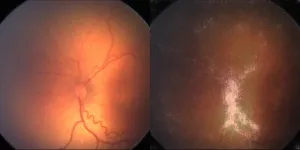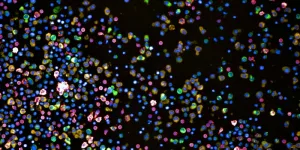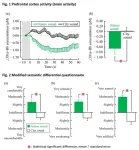(Press-News.org) The team developed a deep learning AI model that can identify which at-risk infants have ROP that may lead to blindness if left untreated, and they hope their technique could improve access to screening in the many areas with limited neonatal services and few trained ophthalmologists.
The study, by an international team of scientists and clinicians in the UK, Brazil, Egypt and the US, supported by the National Institute for Health and Care Research (NIHR) Biomedical Research Centre at Moorfields Eye Hospital NHS Foundation Trust and UCL Institute of Ophthalmology, is published in The Lancet Digital Health.
Lead author Dr Konstantinos Balaskas (Director, Moorfields Ophthalmic Reading Centre & Clinical AI Lab, Moorfields Eye Hospital and Associate Professor, UCL Institute of Ophthalmology) said: “Retinopathy of prematurity is becoming increasingly common as survival rates of premature babies improve across the globe, and it is now the leading cause of childhood blindness in middle-income countries and in the US.
“As many as 30% of newborns in sub-Saharan Africa have some degree of ROP and, while treatments are now readily available, it can cause blindness if not detected and treated quickly. This is often due to a lack of eye care specialists – but, given it is detectable and treatable, no child should be going blind from ROP.
“As it becomes more common, many areas do not have enough trained ophthalmologists to screen all at-risk children; we hope that our technique to automate diagnostics of ROP will improve access to care in underserved areas and prevent blindness in thousands of newborns worldwide.”
ROP is a condition primarily affecting premature babies, where abnormal blood vessels grow in the retina, the thin layer of nerve cells at the back of the eye that converts light into signals the brain can recognise. These blood vessels can leak or bleed, damaging the retina, and possibly leading to retinal detachment. While milder forms of ROP do not require treatment, only monitoring, more acute cases require prompt treatment. An estimated 50,000 children globally are blind because of it.
Symptoms of ROP cannot be seen by the naked eye, meaning the only way to identify the condition is by monitoring infants at risk with eye exams. Without the proper infrastructure for comprehensive antenatal and postnatal care, the narrow window for screening and treatment could be missed, leading to preventable blindness.
The UCL-Moorfields team have developed a deep learning AI model to screen for ROP, which was trained on a sample of 7,414 images of the eyes of 1,370 newborns who had been admitted to the Homerton Hospital, London, and assessed for ROP by ophthalmologists. The hospital serves an ethnically and socioeconomically diverse community, which is important as ROP can vary between ethnic groups, so the tool was trained to work safely across different ethnic groups ensuring anyone can benefit.
The tool’s performance was then assessed on another 200 images and compared to the assessments of senior ophthalmologists.
The researchers further validated their tool by employing it on datasets sourced from the US, Brazil and Egypt.
The AI tool was found to be as effective as senior paediatric ophthalmologists in discriminating normal retinal images from those with ROP that could lead to blindness.
While the tool was optimised for a UK population, the researchers say it is promising that they found it to still be effective on other continents, and they add it could still be further optimised for other environments. The tool has been developed as a code-free deep learning platform, which means it could be optimised in new settings by people without prior coding experience.
First author Dr Siegfried Wagner (UCL Institute of Ophthalmology and Moorfields Eye Hospital) said: “Our findings justify the continued investigation of AI tools to screen for ROP. We are now further validating our tool in multiple hospitals in the UK and are seeking to learn how people interact with the AI’s outputs, to understand how we could incorporate the tool into real world clinical settings. We hope that the tool will enable a trained nurse to take images that could be assessed by the AI tool, in order for a referral for treatment to be made without the need for an ophthalmologist to manually review the scans.
“AI tools are particularly useful in ophthalmology, a field which is heavily reliant on the manual interpretation and analysis of scans for detection and monitoring – here we have found further evidence that AI can be a game-changer for the field and open up access to sight-saving treatments.”
END
AI breakthrough in detecting leading cause of childhood blindness
2023-04-27
ELSE PRESS RELEASES FROM THIS DATE:
Why people include themselves in photos
2023-04-27
Embargoed until 9 AM ET on Thursday, April 27, 2023
COLUMBUS, Ohio – A new study may help explain why people choose to include themselves in some photos – and it is not vanity.
Researchers found that first-person photos (capturing the scene as it looks from one’s own eyes) best represent the physical experience of an event for people.
But third-person photos like selfies (documenting a moment with themselves in it) better depict the deeper meaning of the event in their lives.
“We found that people have a natural intuition about which perspective to take to capture what they want out ...
Selfies and other third-person photos help us capture the meaning of moments
2023-04-27
Imagine you are eating your dream meal and want to commemorate the moment: Should you snap a picture of the food by itself or take a selfie with your partner while you eat? New research suggests that people use first-person photography, taking a photo of the scene from one’s own perspective, when they want to document a physical experience, but opt for third-person photos, depicting themselves in the scene (like selfies), to capture the deeper meaning of events.
Previous research has focused how the photo-taker wants to present themselves to others. The current research, published today in Social Psychological and Personality Science, ...
How can we fight blood cancer more effectively?
2023-04-27
Multiple myeloma is a rare blood cancer caused by the uncontrolled multiplication of abnormal plasma cells. These plasma cells are a special type of white blood cells that play an important role in the immune system by producing essential antibodies in the bone marrow and lymph nodes.
Despite an increasing number of approved drugs and treatment approaches such as immunotherapy becoming available, the disease is still not curable. The average life expectancy of patients after diagnosis is only five years.
One of the main challenges is the cancer’s tendency to return even after treatment. This is because treatment makes the cancer cells ...
Researchers call for national governments to mandate real-time indoor air quality monitoring
2023-04-27
In a response to the COVID-19 pandemic, a team of researchers has published an editorial calling for national governments to consider mandating real-time indoor air quality monitoring in at least all public buildings.
Their editorial is published in the journal Building Simulation on 25 April 2023.
The three-year-long COVID-19 pandemic, caused by the severe acute respiratory syndrome coronavirus 2 (SARS-CoV-2), has revealed that there is a global indoor-air crisis. Vaccination alone has not completely controlled the COVID-19 pandemic and the virus continues to threaten human health and life. Scientists now know most if not nearly all ...
Routine antibiotics don't improve outcomes of post-mastectomy breast reconstruction
2023-04-27
April 27, 2023 – For breast cancer patients undergoing breast reconstruction after mastectomy, avoiding postoperative oral antibiotics does not reduce the risk of infections, reports a study in the May issue of Plastic and Reconstructive Surgery®, the official medical journal of the American Society of Plastic Surgeons (ASPS). The journal is published in the Lippincott portfolio by Wolters Kluwer.
"Our experience suggests that discontinuing routine oral antibiotic treatment after implant-based breast reconstruction ...
MD Anderson and Generate:Biomedicines enter co-development and commercialization agreement to accelerate novel protein therapeutics for oncology using generative AI
2023-04-27
HOUSTON and SOMERVILLE, Mass. ― The University of Texas MD Anderson Cancer Center and Generate:Biomedicines today announced a strategic collaboration to jointly discover and co-develop protein therapeutics for up to five oncology targets in advanced cancers, including small-cell and non-small-cell lung cancer.
Under the co-development and commercialization agreement, MD Anderson and Generate:Biomedicines will each contribute toward creating optimized, potentially best-in-class therapeutics that can rapidly advance into proof-of-concept clinical trials. The agreement combines Generate:Biomedicines’ integrated machine-learning capabilities and experimental/wet lab capabilities – ...
Sounds from nature: A soothing remedy for gambling addiction
2023-04-27
Gambling addiction, also called “pathological gambling” and “gambling disorder (GD),” is known to have severe economic, social, mental, and physical consequences on those affected. One of the major factors contributing to the development and relapse of this disorder is stress. However, studies show that replacing gambling with alternative leisure activities may reduce the likelihood of developing the disorder. In recent years, forest bathing, or “shinrin-yoku,” a form of nature therapy, has emerged ...
Estimating the impact of new high seas activities on the environment: The effects of ocean-surface macroplastic removal on sea surface ecosystems
2023-04-27
“The surface is the skin through which our ocean breathes. It is a critical nursery ground for hundreds, possibly thousands, of species, and it is also one of the most vulnerable regions to human impacts. This is why we must treat the surface with exceptional care. It is an extremely unique and fragile environment, and small impacts at the surface could ripple into large impacts above and below the waves.” - Dr. Rebecca Helm, Assistant Professor of Environmental Science at Georgetown University
New research ...
AI in the ICU
2023-04-27
Clinicians in an intensive care unit need to make complex decisions quickly and precisely, monitoring critically ill or unstable patients around the clock.
Researchers from Carnegie Mellon University's Human-Computer Interaction Institute (HCII) collaborated with physicians and researchers from the University of Pittsburgh and UPMC to determine if artificial intelligence could help in this decision-making process and if clinicians would even trust such assistance.
The team gave 24 ICU physicians access to an AI-based ...
Record ammonia production achieved with inexpensive cobalt catalyst at low temperatures
2023-04-27
Ammonia (NH3) is one of the most widely produced chemicals in the world, with a production of over 187 million tons in 2020. About 85% of it is used to produce nitrogenous fertilizers, while the rest is used for refining petroleum, manufacturing a wide range of other chemicals, and creating synthetic fibers such as nylon. However, all this comes at a high energy cost. Currently, most of the ammonia is produced using the conventional Haber-Bosch process, which requires combining nitrogen and hydrogen at high temperatures (400-450°C) and pressures (200 atmospheres). As a result, scientists ...






